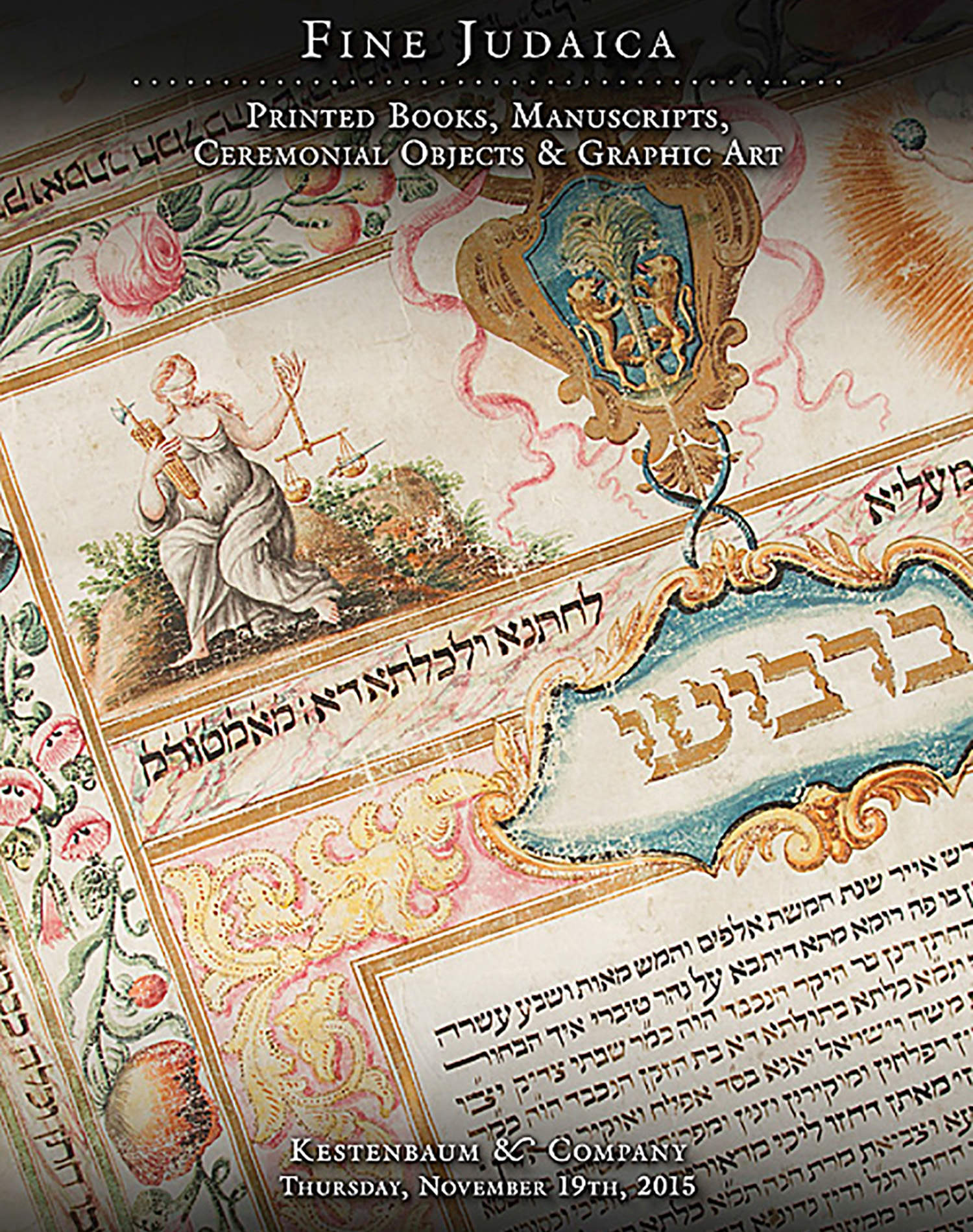Luria, Isaac. Sepher HaKavanoth U’Ma’aseh Nisim, Minhagei Ha’AR”I [history, custom and kabbalistic interpretations relating to the thought and approach of R. Isaac Luria]

AUCTION 66 |
Thursday, November 19th,
2015 at 1:00
Fine Judaica: Printed Books, Manuscripts, Ceremonial Objects and Graphic Art
Lot 145
(KABBALAH)
Luria, Isaac. Sepher HaKavanoth U’Ma’aseh Nisim, Minhagei Ha’AR”I [history, custom and kabbalistic interpretations relating to the thought and approach of R. Isaac Luria]
Constantinople: A. Rosanes 1720
Est: $600 - $900
Isaac Luria, known by the acronym Ariza’l, was the foremost Kabbalist of his time. His mystical teachings were spread by his disciples, especially R. Chaim Vital. In addition, a wealth of legend accumulated around his personality with historical facts as well as visionary pronouncements.
The details surrounding his striking personality are featured in two important works, the Shivchei Ha’AR”I and Toldoth Ha’AR”I, whose sequence of writing is a matter of controversy. Shivchei Ha’AR”I is actually the letters of Shlomo of Dresnitz, Moravia, son-in-law of the AR”I’s disciple Rabbi Yisrael Seruk. These letters were written in Safed between 1602-09 and first published in Ta’alumoth Chochmoh by Yosef Shlomo Delmedigo in 1629. The Toldoth Ha’AR”I version (although entitled Shivchei Ha’AR”I) first appeared in the present Constantinople edition of the Sefer HaKavanoth. Meir Benayahu published a critical edition of this version and argues that the latter served as the source for the Dresnitz letters. According to Benayahu this “Constantinople version” is a combination of the Toldoth Ha’AR”I manuscript with the version published in Emek Hamelech in Amsterdam, 1648 (see Aresheth, Vol. 3 p. 148).
In the introduction of the present edition the publisher notes that he included here manuscript material that was “never previously published
